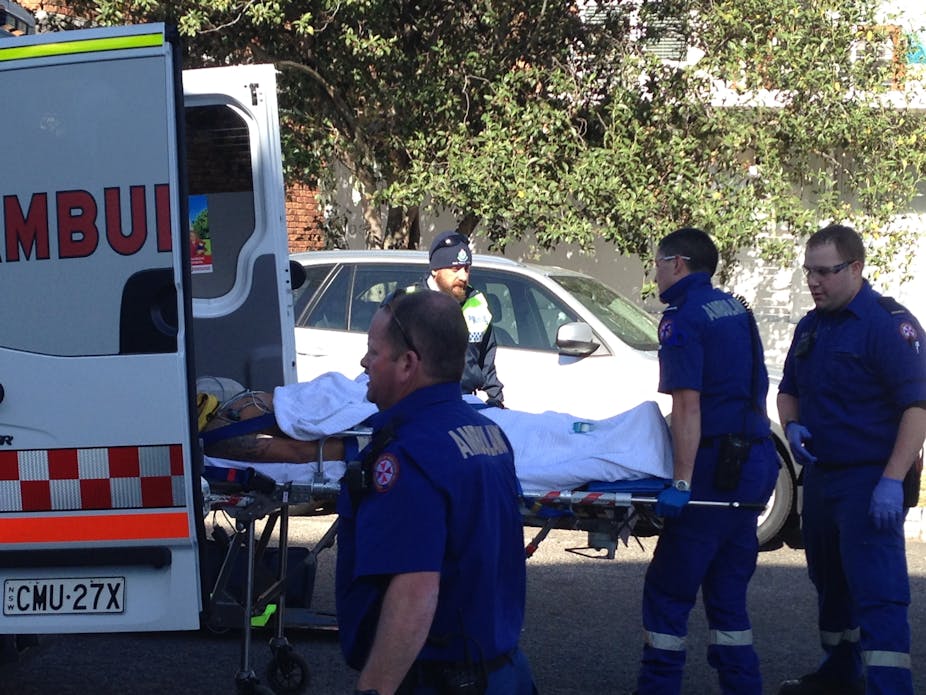Paramedics are one of the few health practitioners who can administer drugs and anaesthetics, deliver babies and perform high-risk interventions, all with relative autonomy.
Yet the paramedic profession is largely unregulated – and what regulation there is is becoming increasingly inconsistent. In fact, paramedics are the only group of mainstream health practitioners not governed by the national regulator, the Australian Health Practitioner Regulation Agency.
National registration is important because it allows the profession to establish national educational standards, professional codes of conduct and practitioner disciplinary measures. These help ensure the delivery of quality care to patients and allow regulators to restrict or suspend the practice of impaired or under-performing practitioners.
National registration also benefits practitioners. It allows for transferable qualifications so people can move from job to job. It offers support and guidance for impaired practitioners. Importantly, it recognises registered practitioners as independent professionals who have obligations to their patients, the profession and their employers.
But the Australian Health Workforce Ministerial Council recently decided to defer the decision about whether to include paramedics as part of the scheme until some time in 2015. This was a mistake. Paramedics should be part of the national registration scheme. And this transition needs to begin now.
What do paramedics do?
In 2012-2013 New South Wales paramedics responded to more than 1.2 million emergencies and other call-outs. The care they provide includes:
- inserting needles and tubes into patients’ bodies;
- administering heavily regulated and dangerous drugs such as morphine and anaesthetic agents;
- managing labour and delivering babies.
They commonly require patients to disrobe. These procedures are usually undertaken in the pre-hospital environment which is, unlike a hospital, largely uncontrolled. This increases the risk that these already risky procedures pose to patients.
The nature of the work and the access to scheduled drugs also increases the risk of paramedics developing a drug dependence or mental health condition, which can impair the practitioner and risk harm to the patient.

The Australian Health Ministers’ Advisory Council identified criteria that must be considered when deciding whether a currently unregulated health profession should be subject to professional registration. This includes whether the occupation poses “a significant risk of harm to the health and safety of the public” – clearly it does – and whether existing regulation provides adequate protections.
State-based registration
Some organisations, including the peak professional association Paramedics Australasia, argue existing regulation is inadequate to provide protection to the public because there is no national mandatory minimum set of prescribed skills, education or professional standards that applies to paramedics.
Although most government-related ambulance services now require a tertiary university degree as the minimum entry to practice, standards for practice vary across states and sectors.
And unlike the national scheme, there is no publicly available, easily accessible mechanism that allows the public or employers to check whether a paramedic has significant health, conduct or performance issues that may threaten patient safety.
In the absence of national paramedic registration, the states are beginning to move on their own.
Until recently, for example, the “paramedic” title was unprotected at law, meaning anyone could call themselves a paramedic without holding any formal training or certification. South Australia and Tasmania have now introduced laws that will protect the “paramedic” title and established core criteria that are required to be met in order to be eligible to use it.

Victoria has announced it will also do this as it considers going even further and introducing a state-based registration scheme that is modelled largely on the national scheme.
This go-it-alone approach presents a number of problems. Among them is the unnecessary cost of duplicating a scheme in each state that is already established nationally for 14 other groups of health professionals.
There is also the potential for the development of a divergence in law between the jurisdictions. This could bedevil attempts to develop a cooperative national scheme and perpetuate the application of different standards of care and governance for patients, practitioners, public and private providers alike.
There are at least 122 permanent private organisations that employ paramedics across Australia. Under the Tasmanian legislation for example, private providers will be unable to use the title “paramedic” without approval from the Commissioner regardless of their skill or qualifications.
If more states move to a “registration” system as Victoria plans to, it may mean that the 50% of private providers who work across state boundaries will be required to “register” in multiple states.
Towards national registration
It is currently unclear why the Health Ministers Council decided to defer the decision regarding paramedic registration under the national scheme, but doing so now risks the further fragmentation of paramedic regulation under various state based schemes.
National registration now would avoid that and allow for the consistent application of standards and mechanisms nationally across both the public and private sectors. It would facilitate the development of a more flexible and professional workforce and demonstrate that patient safety and protection is really front and centre of health care policy across all care areas.

